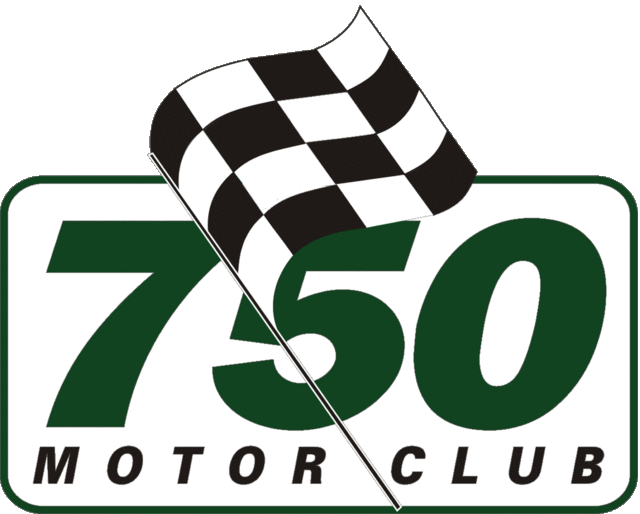History of "Historic" 750 Formula
Then they started to modify the cars for racing... (click to continue)
The first 750 Formula race took place at Silverstone, 3rd June 1950, the ‘Eight Cars’ meeting had 16 runners. The winner was Charles Bulmer, 2nd GB Hewitt, 3rd was Jack French. Jack French would go on to be instrumental in A7 car design. The Jack French Garage is now open to the public at Atwell Wilson Museum.
Regulations permitted A7 side-valve engines (un-supercharged), used with A7 block, crankcase, gearbox, rear axle and chassis. Bodywork had to comply with RAC for sports 2 seaters and fuel was unrestricted. Front suspension was free.
750 Formula was created for cars which had to be used on the road. K.S Jeffrey turned up in an Austin with a tuned engine and lowered suspension, A.Gualtier raced a modified car with 3 speed gearbox, Ken Welfare and E.Baldwin both had shortened chassis machines, J.Peatfield used a modified front axle and Derek Wootton blew the gasket on his 1928 Chummy. Cars were assembled from a variety of parts, and regulations were written to encourage innovation by car builders "Specials" building was born.
750 Formula was a home for sports cars, and some even raced near standard A7 Chummy's. The wide availability of Austin 7s and requirement to adher to road regulations meant 750 Formula racing was cheap and made motorsport accessible to the poorest. This was unlike the single-seater 500s, a formulae for pure racing cars.
Motor Sport Magazine reported “Retirements were few, and speeds were exciting." Supercharged and single seater racing cars were banned. The winners trophy was awarded by Austin 7 works driver ‘Charles Goodacre' at the 750MC Awards Dinner.

1951: Lotus arrive adhering to the rule to be road legal, the Lotus Mk3 was designed solely to win 750F races. Colin Chapman had learn about the advantages of de-siamesing inlet ports when examining an engine brought over from Australia by Derek Jolley. Colin built a very powerful Austin 7 engine, lapping the entire field at Castle Combe, except the 2nd place man Lionel West. On 2nd June at the Eight Clubs meeting, Colin removed a conrod and piston, following a big end bearing failure. He went on to lead the race by 1/2 mile until the crank failed. Chapman would also go on to win the 6 hour Birkett race, the points counting towards the 750 Formula championship. The championship would however be won by Lionel West.
1952: The Lotus name was now firmly on the map,
de-siamsesing of inlet ports was banned, reversing the inlet & exhaust was outlawed, and special building was gaining even more traction. Grid positions were decided by a draw, greatly influencing results. Qualifying for grid positions would not be the norm for another decade. Seven 750 Formula teams entered the Birkett, including the "Hot Chummy's" and Arthur Mallocks in WJ 1515.

1953 would herald a new era in 750MC. Holland Birkett's proposal was to have a formula based on the Ford Ten sports car. Formula 1172 was born. The growth in club membership would allow 750MC to employee a paid General Secretary.
The formula was to have few regulations. Cars would be powered by engines from the Ford 8 or Ford 10, and would have to comply with the Road Traffic Act.
Cockpit width was to be not less than 32" wide, race cars would weigh no less than 8CWT and must carry dynamo, starter, one headlamp and have a windscreen.
Colin Chapmans production Lotus 6 was marketed and started to fill more and more of the 1172 grids. The 6 would become the benchmark, and in 1954 they almost filled some races.
1955: Dave Rees was 750 Formula champion. That year he would compete in both formula, swapping his Austin 7 engine for a Ford 1172 to compete in both events in the same weekend.
Throughout the next few years F1172 Specials and Austin 7s would share grids on several occasions, before finally parting ways for good in 19xx. In 1994 they would re-unite under the name of 750 Trophy, the brainchild of Mike Featherstonehaugh.
History of Formula 1172 - coming soon


